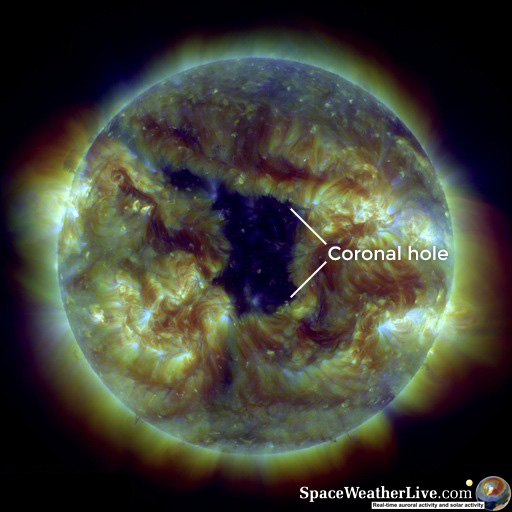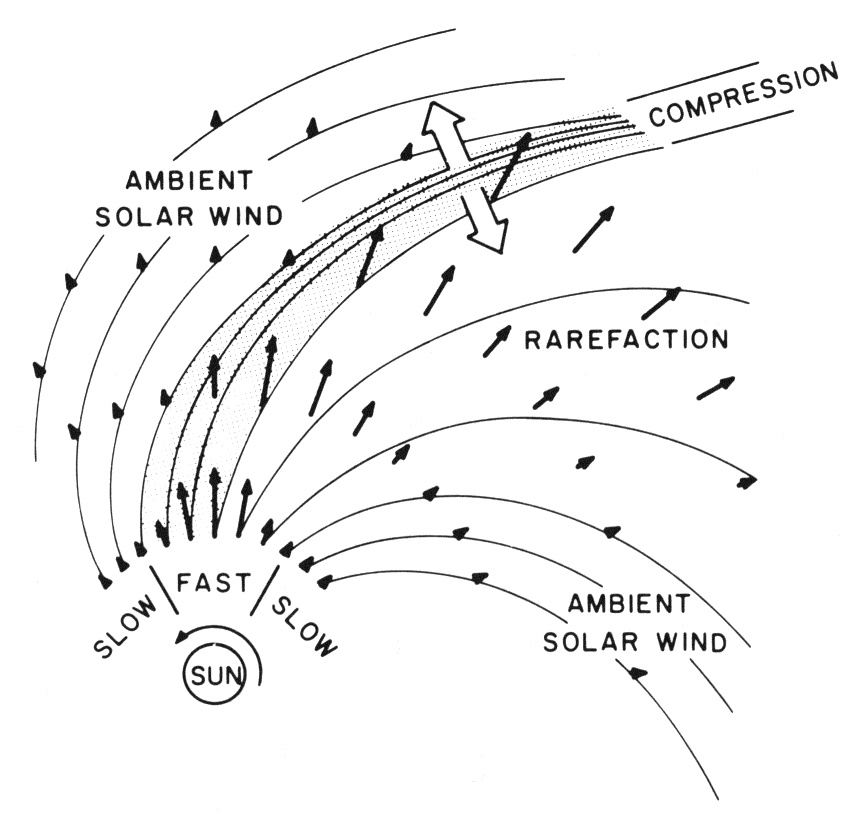What is a coronal hole?
When we look at solar imagery from NASA's Solar Dynamics Observatory (SDO) in extreme ultraviolet at a wavelength of 193 or 211 Ångström, we can see the hot outer layers of the Sun's atmosphere. This outermost layer of the Sun is called the corona. The magnetic field of the Sun plays an important role in terms of what we see on these images. The bright areas on these images show us hot and dense gas that is captured by the magnetic field of the Sun. The dark and empty looking areas are places where the magnetic field of the Sun reaches into space so that these hot gases can escape. These areas are characterized by much lower temperatures and lower densities compared to their surroundings which make coronal holes appear dark. Coronal holes are thus not literal holes in the Sun, it is just kind of looks like it in certain extreme ultraviolet wavelengths!

The magnetic field of a coronal hole is different than the rest of the Sun. Instead of returning to the surface, these magnetic field lines stay open and stretch out into space. At the moment we do not yet know where they reconnect. Instead of keeping the hot gas together, these open magnetic field lines cause a coronal hole to form, where solar wind can escape at high speeds. When a coronal hole is positioned near the centre of the Earth-facing solar disk, these hot gases flow towards Earth at a higher speed than the regular solar wind and cause geomagnetic disturbances on Earth with enhanced auroral activity. Depending on the size and location of the coronal hole on the disk, more or less auroral activity can be expected. Large coronal holes often result in faster solar wind than smaller coronal holes. Coronal holes are usually not interesting for aurora watchers at the middle latitudes and only occasionally cause geomagnetic storm conditions.
Coronal holes can develop at any time and location on the Sun. The coronal holes at the solar poles are the most stable especially in the years around solar minimum but they rarely influence our planet. Only if these coronal holes grow and expand towards lower latitudes we sometimes experience the high speed solar wind flow coming from these polar coronal holes. These extensions towards lower latitudes can sometimes disconnect from the polar coronal hole and become an isolated structure by itself. Coronal holes often persist for weeks or months and change in shape and size as time goes by. Coronal holes can also develop in isolation from the polar coronal holes which is more common in the years just before and after solar minimum.
How do I recognize a coronal hole stream?
Other than a coronal mass ejection, a coronal hole high speed stream (CH HSS) arrives slowly with first a steady increase in the solar wind density over the course of a couple of hours. This increase of the solar wind density occurs because the faster solar wind bunches up the slower solar wind particles in front of it. This phenomenon is often referred to as a Stream Interaction Region (SIR) or as a Co-rotating Interaction Region (CIR) and is almost always associated with an increase in the total strength (Bt) of the interplanetary magnetic field. When this compressed solar wind boundary has passed Earth, we will see that the solar wind speed starts to increase while the total strength (Bt) of the interplanetary magnetic field and the solar wind density decreases.

Latest news
Latest forum messages
Support SpaceWeatherLive.com!
A lot of people come to SpaceWeatherLive to follow the Sun's activity or if there is aurora to be seen, but with more traffic comes higher server costs. Consider a donation if you enjoy SpaceWeatherLive so we can keep the website online!

Space weather facts
| Last X-flare | 2025/03/28 | X1.1 |
| Last M-flare | 2025/04/30 | M2.03 |
| Last geomagnetic storm | 2025/05/01 | Kp5 (G1) |
| Spotless days | |
|---|---|
| Last spotless day | 2022/06/08 |
| Monthly mean Sunspot Number | |
|---|---|
| April 2025 | 140.6 +6.4 |
| May 2025 | 59 -81.6 |
| Last 30 days | 119.9 -9.8 |


